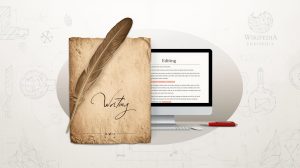A Practical Guide to Writing Editing and Sourcing a Wikipedia Page
Creating a Wikipedia page might seem like a uncomplicated task you write about a topic add some sources and publish. However anyone who has attempted this instantly understands that Wikipedia has strict guidelines to ensure reliability objectivity and reliability. Failure to comply with these rules often results in page deletion within hours or days. If you want your contribution to survive and thrive understanding Wikipedia’s policies research methods writing guidelines and style rules is essential. This guide provides a step by step way of producing a compliant Wikipedia page without risking deletion.
Understanding Wikipedia’s Core Principles
Before you type a single word you must familiarize yourself with Wikipedia’s foundational principles. These principles form the core of all content decisions:
Principle Definition Key Points to Remember Neutral Point of View (NPOV) All content must remain objective and unbiased. Avoid promotional/subjective terms like “best,” “leading,” etc.- Present facts, not opinions. Verifiability Every claim must be supported by reliable, published sources. Use independent sources (academic, books, mainstream media, government).- Exclude personal blogs/social posts. Notability The topic must have significant coverage from reliable, independent sources. Minor mentions or press releases are not enough.- Coverage must be substantial and independent. No Original Research Articles should summarize existing knowledge, not introduce new claims. Don’t add personal research, unpublished facts, or opinions.- Stick to what reputable sources have published. Conflict of Interest (COI) Avoid editing about yourself, your company, or close associates. COI edits are closely monitored.- Biased or promotional content is often removed quickly.
Understanding these principles is not optional. They shape how your article is structured written and sourced. Failing to follow them is the most common reason for deletions.
Step 1: Selecting a Suitable Topic
Choosing the right topic is crucial Ask yourself:
- Does this subject fulfills Wikipedia notability criteria?
- Are there multiple independent sources covering it in depth?
- Can I present the content neutrally without promoting it?
Even if the topic is notable or significant to you personally it will likely be deleted if it lacks neutral coverage. Wikipedia is not a marketing platform; it is an encyclopedia.
Tip: Check if similar topics already exist. For instance if you want to write about a company see if there is a page on the industry or competitors. This helps gauge whether your subject has sufficient coverage.
Step 2: Conducting Thorough Research
Research forms the foundation of a compliant Wikipedia page. You need credible verifiable and independent sources. Here’s how to go about it:
- Primary vs. Secondary Sources Wikipedia prefers secondary sources that analyze or interpret primary information. For example a newspaper article reviewing a company’s work is more suitable than the company’s press release.
- Academic Sources Peer reviewed journals scholarly articles and books provide strong credibility especially for historical scientific or technical topics.
- Media Coverage Reputable news outlets are valuable. Avoid tabloids personal blogs and self published content unless they meet Wikipedia’s reliability standards.
- Citing Correctly Each reference should list complete details: author release date title and URL if available. Wikipedia’s citation templates like {{cite web}} or {{cite book}} ensure consistency.
- Organizing Sources Use a worksheet or note keeping tool to track sources. Include summaries page numbers and quotes for easy reference during writing.
Warning: Relying heavily on self published sources or promotional content is a red flag. Articles based mainly on press releases are almost always flagged for deletion.
Step 3: Creating a Draft
Wikipedia encourages creating articles in the Draft namespace first. Drafts allow you to develop content receive feedback and ensure compliance before publishing. Here’s how to approach drafting:
- Start in Your Sandbox Your Wikipedia account includes a sandbox where you can experiment. Use this space to format headings add sources and organize content.
- Outline the Article Most Wikipedia pages follow a standard structure:
- Introduction
- History/Background
- Achievements/Products/Impact
- Controversies or Criticisms (if any)
- References
- Write Neutrally Avoid promotional adjectives. Replace words like “best” “amazing” or “innovative” with factual descriptions. For example instead of “the company is the best in its field” write “the company operates in the X sector and provides Y services.”
- Keep Paragraphs Short Wikipedia favors concise informative writing. Long paragraphs with unnecessary detail can be trimmed or split.
- Link to Existing Articles Interlink relevant Wikipedia pages. For example if writing about a software company link terms like “cloud computing” or “AI” to their Wikipedia pages. This increases credibility and visibility.
Step 4: Formatting and Style
Wikipedia has a distinct style. Following it increases the chances of acceptance:
Headings and Subheadings Use proper heading levels. H2 for main sections H3 for subsections. Avoid H1 (title) in the body.
- Neutral Tone Avoid marketing language.
- Past Tense for History When describing historical events use past tense.
- Active Voice Sparingly Wikipedia often uses passive or neutral constructions.
- No Lists of Achievements Avoid “Top 10 awards” style lists; summarize them in prose with proper sources.
- Images Use only freely licensed images or your own uploads with proper attribution.
Tip: Use Wikipedia’s Manual of Style (MOS) as a guide for headings references dates and numbers.
Step 5: Adding References Correctly
References are the backbone of verifiability:
Inline Citations: Place citations immediately after statements they support. Use <ref>{{cite web|…}}</ref> or templates for books and journals.
Consistent Citation Style: Stick to one style (e.g. APA like Chicago or Wikipedia’s preferred templates).
Avoid Over citation: Only cite when necessary; citing every sentence with the same source may look suspicious.
Use Reliable External Links: External links should supplement content not serve as primary evidence. Avoid linking to commercial pages or self promotion.
Step 6: Submitting Your Article
Once your draft is complete:
Submit for Review: Move your draft to the Pages for drafting (AfC) process if you are new. Experienced editors review drafts for adherence before release.
Address Feedback: Editors may suggest changes such as inserting citations or revising text for neutrality. Respond constructively and make revisions promptly.
Avoid Immediate Re Publishing: If your draft is rejected don’t republish immediately. Review feedback improve your article and resubmit.
Step 7: Avoiding Common Pitfalls
Even experienced editors make mistakes. Some common causes of deletion:
- Promotional Content Language that markets a person brand or organization.
- Insufficient Notability Lack of independent in depth coverage.
- Excessive Primary Sources Relying on company blogs press releases or social media.
- Original Research Including unverified claims opinions or speculation.
- Conflict of Interest Writing about yourself or your company.
Pro Tip: Search for “Articles for deletion” discussions on Wikipedia to see why similar pages were deleted. Learning from these examples is invaluable.
Step 8: Maintaining Your Article
Publishing is not the end. Wikipedia articles are living documents:
- Monitor Changes Check your article frequently for changes by others users. Some edits may inadvertently introduce bias or errors.
- Update with Reliable Sources As new developments occur while editing using credible references.
- Engage Constructively Participate in talk pages to discuss conflicts or recommendations. Avoid edit wars agreement is key.
- Watch for Vandalism Wikipedia articles are publicly editable. Use the “Watchlist” feature to track changes.
Step 9: Tools and Resources for Success
Several tools make Wikipedia editing easier:
- WikiSandbox A private area for drafting articles.
- Citation Generators Tools like Zotero or Citation Machine help create templates.
- Notability Checkers Review existing Wikipedia pages to see coverage criteria.
- Manual of Style (MOS) Comprehensive guide for formatting grammar and references.
- Talk Pages Engage with editors and seek feedback.
These resources increase efficiency and help maintain compliance.
Step 10: Building Reputation on Wikipedia
Having a strong account history helps your page survive:
- Make small constructive edits to existing pages.
- Fix grammar update references and improve formatting.
- Gain trust from experienced editors; new editors with no history are scrutinized more heavily.
Wikipedia favors contributors with a track record of compliance and neutrality.
Conclusion
Creating a Wikipedia page that escapes deletion is challenging but achievable. It requires understanding the platform’s principles choosing a significant subject handling thorough research drafting with a neutral tone formatting correctly citing reliable references and captivating with the community. By following these steps you can avoid the common pitfalls that lead to removal and contribute valuable lasting content to one of the world’s most trusted encyclopedias.
Remember: Wikipedia rewards diligence objectivity and accuracy. Your effort in adhering to these guidelines not only ensures your page survives but also enriches the global information center in a meaningful way.
Frequently Asked Questions (FAQs)
Disclosure: We are a dedicated content marketing agency guiding small and medium businesses through their journey to the first page of Google.

Admin at Search Marketing Experts, publishing insightful blog posts on SEO, digital marketing, and strategies to help businesses grow online.

